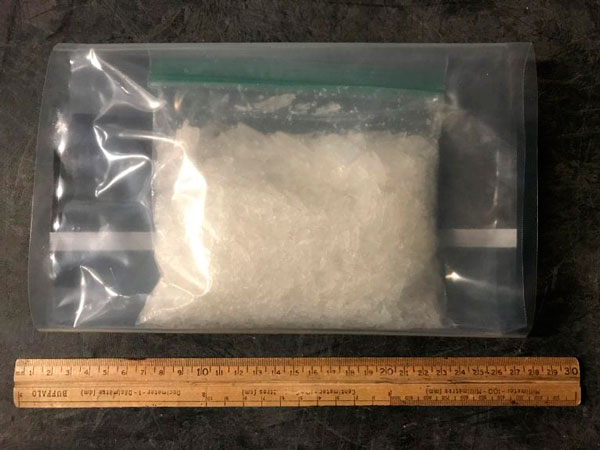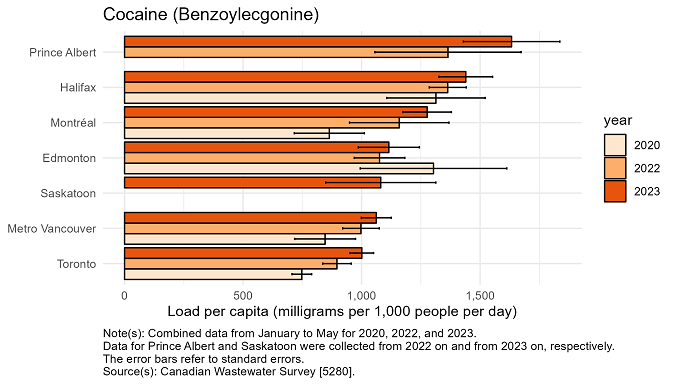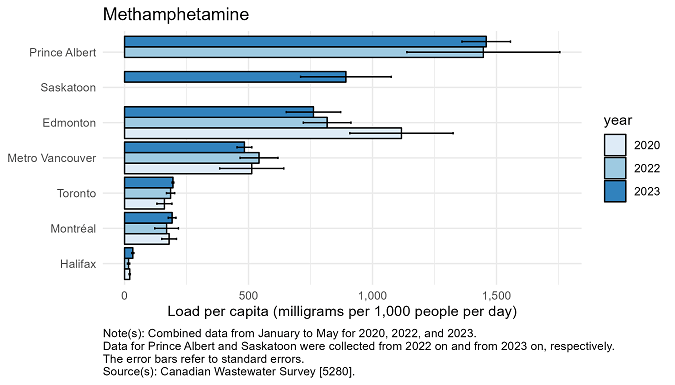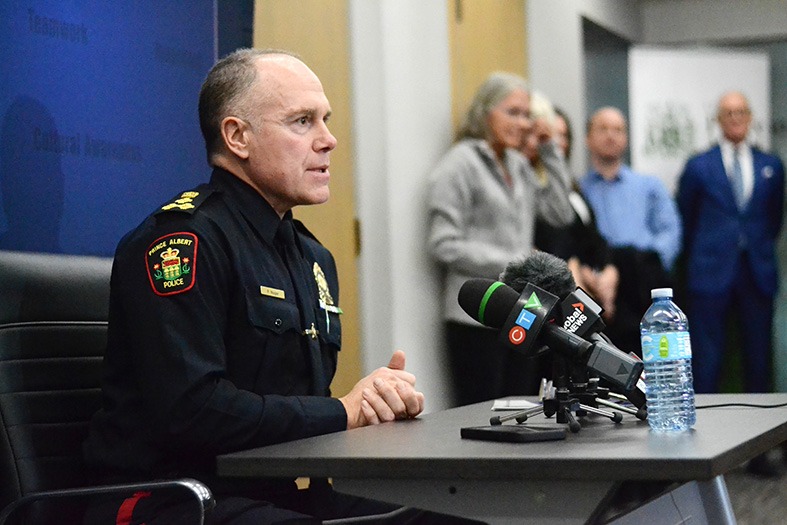
Nogier says regular analytics needed to shift enforcement strategies
A new report based on wastewater testing paints a staggering picture of drug use in Prince Albert.
Data from the Canadian Wastewater Survey shows the city has the highest daily load per capita of cocaine, methamphetamine and prescription amphetamines among seven Canadian cities – also including Saskatoon, Halifax, Montreal, Edmonton, Metro Vancouver and Toronto.
The Canadian Wastewater Survey conducted tests for various drugs between January 2022 and May 2023, which was compiled into a Statistics Canada report released on Nov. 1.
“In the context of an ongoing drug crisis in some parts of Canada, wastewater data can provide nearly real-time information, which contributes to a better understanding of current drug use and emerging trends,” reads the report.
“This information can help inform more targeted public health responses and law enforcement activities.”
Prince Albert police Chief Patrick Nogier said the numbers “validated what we were always concerned with” when it comes to drug activity, particularly methamphetamine.
What remains unknown, though, is why exactly Prince Albert has such an alarming drug problem.
“What we’re trying to figure out is what is it about Prince Albert that makes it an attractive place to either purchase, consume, or sell drugs,” said Nogier.
“Is it the geographic location? Is it the fact that we’re one of those main gateways to the north where you have an influx of individuals that come from rural areas into the community – because it is one of the major communities in the northern part of the province – where there can be a gathering for the sale and distribution of drugs?” he questioned.
Currently, he said, the police service is largely reactive to crime. Nogier said the first step to more preventative measures is investing in analytics to gain a deeper understanding of why particular crimes are occurring.
“It’s trying to get a better comprehension of that so that we can maybe intervene with enforcement strategies,” he said.
The numbers
Cocaine, methamphetamine and other amphetamines are stimulants, which speed up the body’s system. Methamphetamine is an illicit drug, while other amphetamines are prescription drugs used to treat conditions such as ADHD.
About half of accidental opioid toxicity deaths across the country also involved a stimulant, according to a recent report from the Public Health Agency of Canada.
The wastewater results indicate that Prince Albert had 1,633 mg of cocaine per 1,000 people per day in 2023, with a standard error of plus or minus 204 mg in early 2023.
Saskatoon’s wastewater showed a daily load per capita of 1,081 mg of cocaine during that same time, and Toronto’s sat at 1,001 mg.

The methamphetamine numbers show a much larger difference.
Prince Albert had 1,459 mg of methamphetamine per 1,000 people per day, with a standard error of plus or minus 98 milligrams in early 2023. It was slightly lower in 2022, at 1,447 mg.
Saskatoon’s wastewater showed a daily load per capita of 893 mg of methamphetamine in 2023.
In Halifax, though, testing in 2023 showed a daily load per capita of only 33 mg of methamphetamine.
Both methamphetamine and amphetamine levels were highest in participating cities in the prairies, according to the report.

Prince Albert also had the highest numbers for prescription amphetamine use, with 178 mg per 1,000 people per day in 2023, slightly higher than in Saskatoon at 145 mg.
Statistics Canada’s observations showed that overall jumps in methamphetamine and amphetamine use did not align, implying there was an increase in amphetamines. However, more research is needed to determine if this is due to illicit amphetamine use or increased prescriptions.
‘A one-to-one correlation between violence and the drug trade’
Nogier said drug use fuels other types of crime related to weapons, theft and violence – posing a threat to frontline officers and public safety.
“There’s a certain amount of traumatization and victimization that comes as a result of the drug culture. Whether that is one drug rival working against another, using violence to try and take over a certain area of the community, using violence to try and intimidate, force other…drug entrepreneurs out of the community,” he said.
“There’s definitely a one-to-one correlation between violence and the drug trade.”

Nogier said the police service has been looking at how other countries have applied wastewater data to law enforcement.
He said Australia is noticing significant decreases in per capita loads a few months following a major drug bust.
“A decrease can be representative of inability to purchase product. If the product is not available, whether it’s a disruption of supply or the supply is just not accessible, drugs will become more expensive,” explained Nogier.
“When drugs become more expensive, you don’t have people that are going through substance abuse issues that have the ability to say ‘I can’t afford it, therefore I won’t use it’ – They still have that because it’s a very biological, physiological dependency.”
This leads to crimes like theft, property violence, and robberies to fuel their drug habits.
Nogier said targeted policing initiatives, such as the Crime Reduction Team, play a major role in seizing weapons related to drug activity.
Enforcement is “only one side of that complete triangle” to reduce, alter or prohibit someone’s drug habits. Nogier said another important step to reducing drug activity is working within the community through outreach or education.

